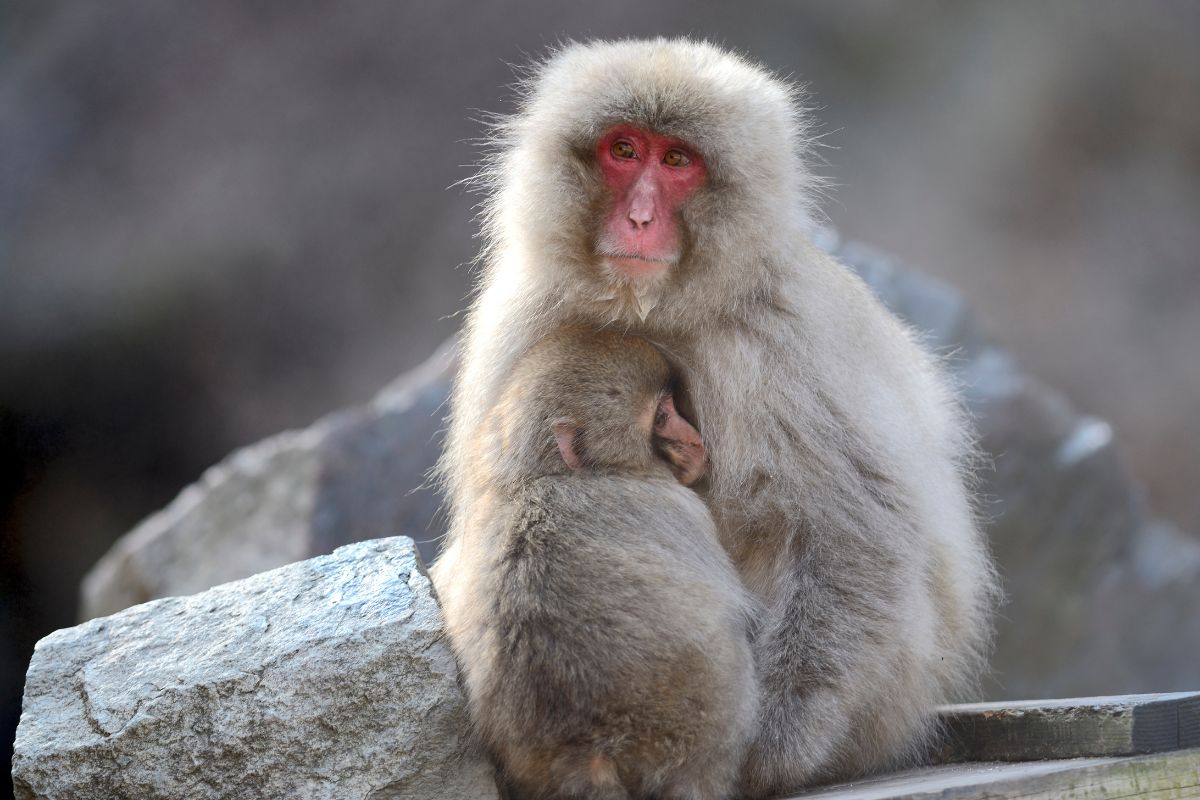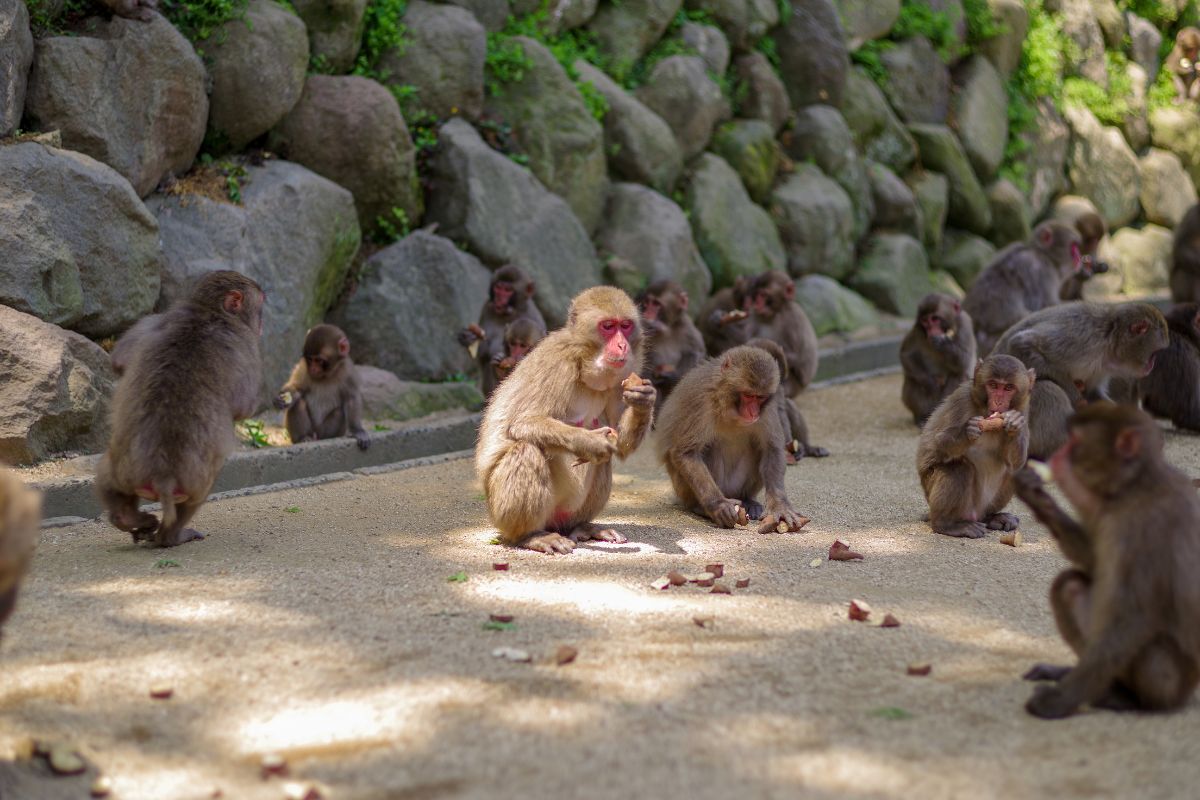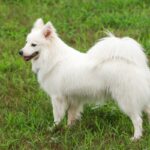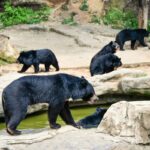Japan has some unique animals. What is the national animal of Japan? It’s time to find out below, and we’ve got all the best information about the national animal of Japan, so enjoy!

The Japanese people have a long history of having an interest in their country’s wildlife. They are very proud of their native fauna, which includes many species that can be found nowhere else on Earth.
The most famous of these is probably the Japanese macaque, but there are also several other endemic species, such as the Japanese raccoon dog, the Japanese badger, the Japanese marten, and the Japanese horseshoe bat.
What Actually Is The National Animal Of Japan?
The national animal of Japan is the Japanese macaque (Macaca fuscata). The Japanese macaque is a monkey that lives in Japan and other parts of East Asia. It is also known as the black-faced langur, or simply langur.
The Japanese macaque is officially the national animal of Japan. They are also called “snow monkeys” in some places because they live near mountains and lakes. In fact, you can find them in most of Japan, although they tend to prefer forests and mountain ranges.
In recent years, there has been a trend among young people to dress up as macaques. There are even monkey cafés and restaurants in Tokyo, Osaka, Kyoto, Sapporo, and other cities where visitors can enjoy food and drinks while watching monkeys play around.
You can see macaques in zoos and museums throughout the country, including the National Museum of Nature & Science in Chiba Prefecture, and the Monkey World in Kagoshima City.
What Is A Japanese Macaque?
The Japanese macaque is an old-world monkey species – the northernmost living non-human primate. They are colloquially known as “snow monkeys” because some live in areas covered with snow for months each year.
Their coat is very dense; it is usually dark brown or blackish gray, although individuals vary widely in color. In winter, the coat becomes white due to the accumulation of snow.
They have long, thick hair, which gives them a furry appearance. There are four types of hairs; guard hairs, undercoat hairs, under hairs, and underfur hairs.
Guard hairs protect the body against insects and cold weather. Undercoat hairs keep the animal warm and help prevent water loss. Under hairs collect food particles. Underfur hairs trap air pockets.
Their face is devoid of hair, except for a few tufts around the eyes. This makes the face look bare, especially during mating season. Males grow a beard, while females lack facial hair. Females have longer tails than males.
Macaques have large ears, with tufted tips. They use their hands like fingers, grasping branches with their thumb and forefinger. Their feet are prehensile, meaning they can grasp objects.
What Do We Know About Their Lifestyle And Habits?

Japanese macaques are social animals. They live in groups called troops, consisting of about 30 individuals. A troop typically consists of one adult female, her offspring, and several adult males.
Males remain in the troop throughout their lives, whereas females usually move out of their birth troop after reaching puberty.
The troop leader is the oldest male in the troop, and he leads it in many ways. He determines where the troop goes each day, and he decides whether to attack other troops. In addition, he defends his troop against predators and other macaque species.
When a troop meets another troop, the leader greets the newcomers and negotiates how the two groups will interact. If there is no agreement, the two parties fight.
When a female gives birth, she stays in the same troop as her infant. After weaning, she leaves the troop and joins another. She returns to her original troop when she becomes sexually mature again.
Females spend much of their time in trees. Male monkeys spend most of their time moving around on the ground.
What Do They Eat?
Japanese macaques are omnivorous. They consume both plant material and animal matter such as fruit, berries, seeds, flower buds, leaves, insect larvae, grasses, worms, snails, small fish, crustaceans, and birds’ eggs.
During the winter months, they switch to a primarily vegetarian diet consisting of roots, tubers, bulbs, and fungi.
What About Their Mating Habits?
Polygyny is one of the most common mating systems among primates. In Japan, where scientists study monkeys, it is called “polygynandry.”
This system is characterized by promiscuity in both sexes, with individuals having multiple sexual relationships throughout the year.
A male will typically sleep with several females over the course of a few nights, while a female will have sex with several males over the course of a single night.
In some cases, there is no clear dominance hierarchy within a group; rather, the social structure is based on cooperation and mutual support.
As such, a dominant male might end up sleeping with subordinate females. But even in those instances, he still gets the opportunity to sire offspring.
The Japanese macaque is a primate native to Japan. Like many primates, it is omnivorous and eats fruit, leaves, insects, small mammals, eggs, and occasionally plants.
When they’re young, macaques live in groups of about 15 animals. By adulthood, they form larger groups of around 30 members.
Are There Any Threats To The Species?

Japanese macaques face no major threat to their survival at the species level, according to a study published Wednesday. But around 10,000 macaque monkeys are killed each year by farmers protecting their crops and livestock, according to the study.
The researchers found that the population of the macaques faces “a high risk of extinction due to human disturbance.” They recommend that Japan’s Ministry of Agriculture, Forestry and Fisheries take steps to protect the animals.
The report, published in the journal Scientific Reports, analyzed data collected over 12 years across eight prefectures in Japan. Researchers used camera traps to determine how many macaques lived in those areas and whether they faced threats such as hunting, poisoning, or habitat loss.
The researchers also looked at factors like how much-forested land there was around the primates’ habitats, and how close people lived to the forests.
The International Union for Conservation of Nature (IUCN) recently published a report on Japan’s wild primates called “Japan Macaques.” In it, the organization lists the Japanese macaque as one of the most widely distributed primate species in the world.
The total population is estimated to be around 114,431 individuals. This makes the Japanese macaque the fourth-largest monkey population in the world.
Final Thoughts
The Japanese macaque has been studied extensively since its discovery in 1859. It is an important part of Japanese culture, and it plays a role in traditional medicine.
It is also known for being a very intelligent animal. Scientists believe that the Japanese macaque may have evolved from other Asian monkeys because of its unique brain shape.
We hope that you’ve enjoyed our article, all about the national animal of Japan and the way that the macaque lives!
- 16 Best Websites To Watch Japanese Movies With English Subtitles - May 11, 2023
- Is ZIPAIR The Best Airline For Traveling To Japan? - May 11, 2023
- Ryu Murakami Vs Haruki Murakami – Which One Should You Read? - May 11, 2023


![Native & Wild Animals That Live In Japan [Wildlife Guide] Native & Wild Animals That Live In Japan [Wildlife Guide]](https://justaboutjapan.com/wp-content/uploads/2022/09/Native-Wild-Animals-That-Live-In-Japan-150x150.jpg)





